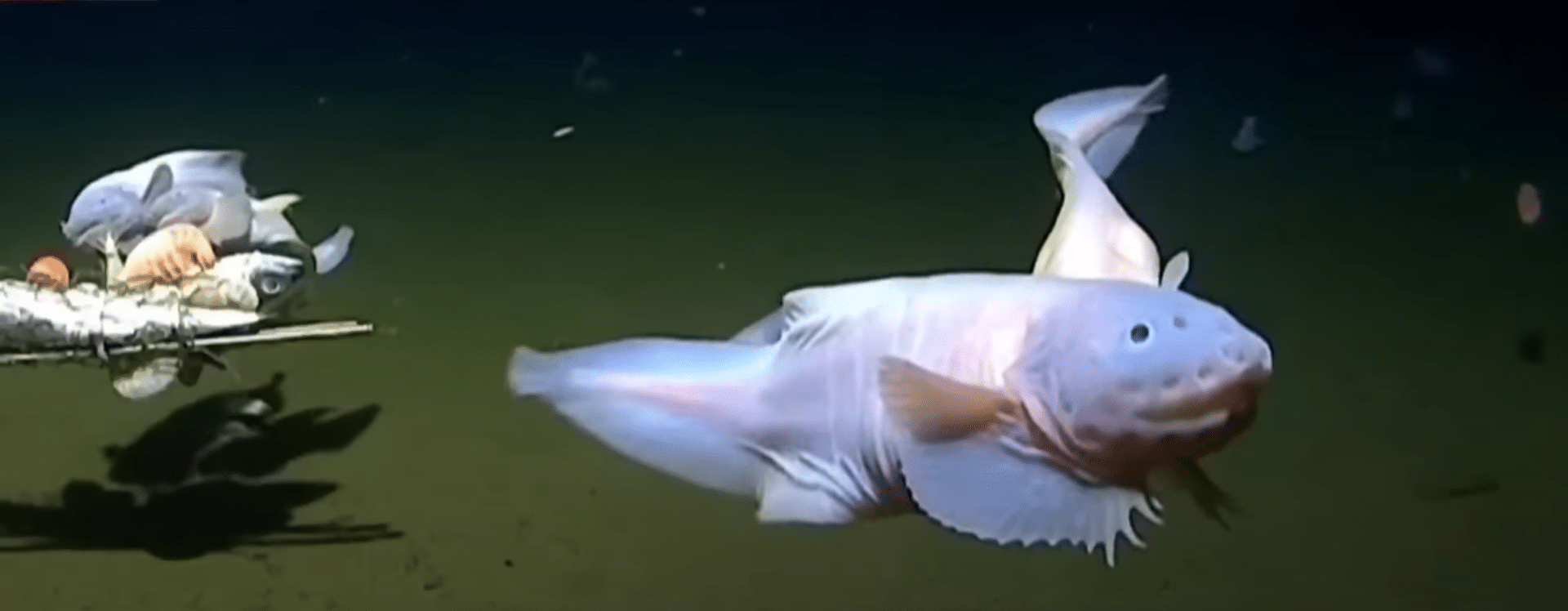Off the coast of Japan, scientists have videotaped the deepest fish ever seen in the ocean.

Wonders of the Deep Sea
The baby snailfish, an unidentified species of the genus Pseudoliparis, was poised for the spotlight as it cruised at a depth of 8,336 meters (nearly 27,000 feet) just over the ocean floor in the depths of the northern Pacific Ocean.
On Monday, April 3, researchers from the University of Western Australia and the Tokyo University of Marine Science and Technology unveiled video of a snailfish that had been captured by underwater cameras in September.

The researchers didn’t stop at breaking one record; in addition to physically catching two Pseudoliparis belyaevi creatures at an altitude of 8,022 meters, they also set a record for the deepest fish capture.
Scientists had previously been unable to gather fish from any depth deeper than 8k meters, with the deepest snailfish ever discovered being found at 7,703 meters (25,272 feet) in 2008 before the new record was established.
Check it out here:
Amazing Science
The expedition’s leader, marine biologist Alan Jamieson, creator of the Minderoo-UWA Deep Sea Research Centre, said: “What is significant is that it illustrates the depth to which a particular species of fish will delve into the ocean.”
A 10-year investigation of the deepest fish populations in the world includes the filming in the trenches off the coast of Japan.
While most snailfish are found in shallow water, Jamieson noted that some can survive at some of the “greatest depths ever recorded.”

During the two-month study last year, the scientists deployed three “landers”—automatic marine robots outfitted with high-resolution cameras.
The bots were lowered at various depths into the Japan, Izu-Ogasawara, and Ryukyu trenches.
The deepest snailfish was observed hovering serenely amid crustaceans on the bottom in footage from the Izu-Ogasawara trench.
The fish was categorized by Jamieson as a juvenile, and he explained that this is because juvenile fish frequently remain as deep as they can to avoid being eaten by larger predators in shallower water.
Another amazing video, taken in the same trench at a depth of 7,500 to 8,200 meters, shows a school of fish and crustaceans actually chowing down on food attached to the underwater robot as bait.
Images of the two captured snailfish offer a unique view into how the deep-sea species’ distinctive characteristics enable it to thrive in the severe and frequently hostile environment.
They have tiny eyes, a translucent body, and no swim bladder, which most fish use to float, to survive in the deep sea, according to Jamieson, who spoke to CNN.

According to the professor, the warm southern current of the Pacific Ocean promotes activity and drives marine life deeper, giving bottom-feeding marine life a decent source of food.
Although greater research into the depths and the organisms that inhabit them is something that scientists aim to pursue, Jamieson said that it is expensive work.
In actuality, the operation and assembly of each bot costs $200k.
The difficulties, he complained, are that scientists don’t have a lot of money and that technology has been pricey.


